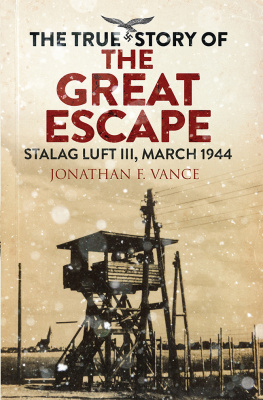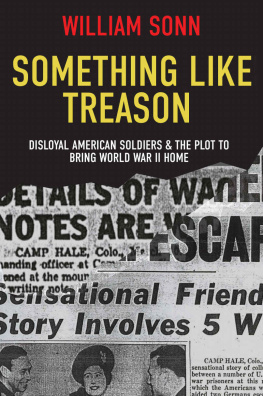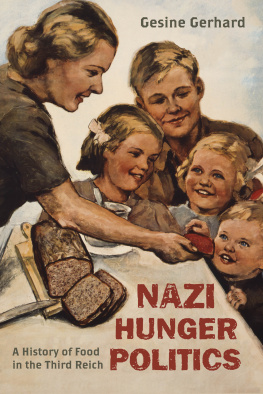Published by The History Press
Charleston, SC
www.historypress.net
Copyright 2016 by Paul N. Herbert
All rights reserved
Front cover, bottom left: Courtesy of Library of Congress, Prints and Photographs Division, FSA/OWI Collection, LC-USW33-022634-D.
First published 2016
e-book edition 2016
ISBN 978.1.62585.808.5
Library of Congress Control Number: 2016945801
print edition ISBN 978.1.46713.537.5
Notice: The information in this book is true and complete to the best of our knowledge. It is offered without guarantee on the part of the author or The History Press. The author and The History Press disclaim all liability in connection with the use of this book.
All rights reserved. No part of this book may be reproduced or transmitted in any form whatsoever without prior written permission from the publisher except in the case of brief quotations embodied in critical articles and reviews.
To Artie Crisp and J. Banks Smither from The History Press for their expertise and support. Its a joy working with people like them who toil mightily to help turn fascinating topics of history into highly readable books.
Contents
Foreword
There are millions of stories that came out of World War II, but Paul Herberts story of U.S. Army private Dale H. Maple is one of the strangest, most fascinating and least known.
Dale Maple was a brilliant, Harvard-educated soldier from California fluent in twenty languages but who had an odd admiration for Nazi Germany. In the late 1930s, he was a member of the schools German Club, had once shown up at a campus Halloween party dressed as Hitler and had gotten kicked out of the schools ROTC program for espousing pro-Nazi views. When war broke out, however, Maple enlisted in the army, not waiting to be drafted. His pro-German sympathies soon came to the fore.
Eventually, he was assigned to the 620th Engineer General Service Companya unit primarily made up of disgruntled American soldiers suspected of disloyalty. The 620th was sent from Fort Meade, South Dakota, to Camp Hale, Coloradoan army post high in the Rocky Mountains where Americas elite mountain soldiers were being trained.
Somehow, through someones obvious oversight, the 620th happened to be billeted adjacent to a German prisoner-of-war enclosure in the camp. (There were hundreds of POW camps inside the United States during the war holding some 400,000 German, Italian and Japanese prisoners.) It was here that Maple befriended a few of the 250 German prisoners, former members of Erwin Rommels famed Afrika Korps who had been captured in North Africa.
Fraternizing with prisoners is something prohibited by army regulations, a fact that did not trouble the misguided Maple. His friendship with two of them soon resulted in an escape plot that involved Maple buying a used car and a pistol, somehow getting the two men out of the prisoner enclosure, leaving the camp and driving the three of them south, through New Mexico and toward the Mexican border. There the hastily conceived plan was for the trio to be spirited out of the country by German agents and across the Atlantic to the Fatherland. Running out of gas a few miles short of the border, the trio walked across the line but were soon picked up by Mexican authorities, returned to the United States and handed over to the FBI.
Maple, in addition to helping the prisoners escape, had become a traitor and a deserter. Both charges carried a possible death sentence, which, after a court-martial in which Maple was found guilty, was imposed. President Roosevelt later commuted the sentence to life imprisonment.
The extent of the authors research is evident throughout, and he has produced not only a readable, finely detailed account of Maples treasonous activities but also a larger portrait of the practically unknown story of enemy combatants being held in the United States, the conditions of their incarceration, and their many attempts to escape. Paul Herbert is to be commended for bringing to light this intriguing wartime tale that has been, until now, allowed to slip through the radar of history.
FLINT WHITLOCK
Editor, WWII Quarterly magazine
Coauthor of Soldiers on Skis: A Pictorial Memoir of the 10thMountain Division
Preface
This book is about an obscure event in American history. A few magazine articles have been written about it, and its on Wikipedia. The U.S. Army retains voluminous court-martial files, so any researcher can read the original documents. The storys obscurity results partially from the controversy during World War II surrounding its two key elements, the first of which concerns the existence of hundreds of camps here in the United States that held almost half a million foreign soldiers. During the war, the army didnt publicize the camps. Even to this day, to the general population, the existence of the camps remains largely unknown or shrouded in confusion.
The second element causing obscurity concerns the existence of army special organizations during World War II. These organizations contained hundreds of American soldiers that the army considered disloyal. The soldiers werent advised they were considered disloyal or told how that determination was arrived at or by whom. They didnt have any kind of hearing to defend themselves or make their cases. Soldiers paid a pretty steep personal and career price once they were labeled disloyal. Certainly, the actions of many earned their placement in the camps. But this topic is dangerous stuff, fraught with legal and moral issues. Its no wonder the army didnt publicize it.
Acknowledgements
My thanks to Flint Whitlock for writing the foreword; Sarah Gilmor, Melissa VanOtterloo, Kirby Stokes and Aaron Marcus of the History Colorado Center; Keli Schmid at the Tenth Mountain Division Resource Center of the Denver Public Library; Diane Bell of the San Diego Union-Tribune; Captain Manion Long of the Doa Ana, New Mexico Sheriff s Department; Artie Crisp, J. Banks Smither, Candice Lawrence and Julia Turner from The History Press; Ron Owens; Delona Bryce for sharing her memories of her grandfather; Mike Kaszuba at the El Cajon Historical Society; Beth Benko for helping with research; independent historian Ricky Robertson; Audrey Kalivoda and Susie Haver of the Camp Concordia Preservation Society; Jennifer Orrigo Charles of Colorado Preservation Inc.; Matthew Rector and Joseph Yates for helping with the photo at the Cultural Resources Office at Fort Knox; Itzel Gonzalez of the San Diego High School Alumni Association; Cathy Lazarus for the Camp Hearne photos; Rachel Mosman of the Oklahoma Historical Society; Tom Mudugno of the Goleta History Center, Dale Sauter and Jennifer Joyner of East Carolina University; and Christy Calhoun of the Mississippi Armed Forces Museum.
Introduction
Among the hundreds of German soldiers confined to the prisoner of war stockade at Camp Hale, Colorado, during the last weekend of January 1944, one man didnt belong. He appeared to fit in, in the sense that he wore the standard prison garbthe PW stenciled in white on his blue clothes. But he wasnt a German prisoner. He wasnt a prisoner at all. He had never been to Germany and, in fact, had never traveled overseas and had no known German heritage. He traced his family roots for generations to Illinois, New York and Kentucky. This ersatz prisoner of war was actually a private in the U.S. Army. He knew the rules against fraternizing with enemy prisoners, but he nevertheless surreptitiously entered the prison camp, hidden on a truck. Not much else is known about his weekend among the throng of prisoners or how he inconspicuously left their lair and returned to the U.S. Army camp without drawing unwanted attention.












